'Ask a Horticultural Scientist' ran from 15-22 May 2011, and was your chance to ask your questions on professional crop production and protection and other horticultural issues via the SCI forums. Members of the Group were on hand to answer questions and offer solutions to those knotty problems, which require the expertise of a fellow professional.
Many thanks to all those who took part. The questions and answers follow below.
How can I keep cut flowers fresh?

Thoroughly clean cut-flower containers with a sterilant such as sodium hypochlorite to destroy the bacteria that cause flowers to wilt, and rinse thoroughly before adding fresh flowers. Using a preservative helps increase the life of cut flowers. ‘Flower foods’ contain carbohydrate for the cells to produce energy, a biocide to kill bacteria and acidifier to adjust the pH of the water to help water uptake by the flowers.
One other tip: narcissi (and that means daffodils as well) exude calcium oxalate, and are toxic to other flowers in a vase. Tulips are said to be especially sensitive. So be careful how you deal with a mixed bunch of Spring flowers.
Sue Grimbly
How do I produce early potatoes?
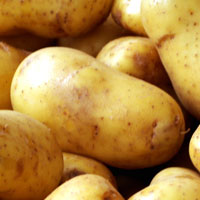
Seed tubers need to be chitted, by placing them in the light at 15° - 20°C, with their crown (the apex, with a cluster of buds) uppermost. (Egg boxes are useful for this.) Tubers should sustain only a few sprouts, growing near the crown. When you plant out, rub off the small sprouts, leaving only one or two per tuber.
Growth after emergence, and especially the initiation and growth of the tubers, depends on photosynthesis taking place in the leaves. Tubers are formed on stolons – lateral shoots formed at the underground nodes – so seed tubers need to be planted deep enough to produce several nodes, but not so deep that it takes a long time for the sprouts to emerge and photosynthesis to begin. Plant at a depth of 25cm (9'), 30cm (12') apart within the row, with 60cm (24') between rows.
Photosynthesis efficiency depends on how much sunlight is absorbed by the leaves; so the aim should be to get a rapid, complete ground cover of foliage. You can achieve this if the emerging shoots grow rapidly. If they’re widely spaced, the number of tubers per unit area will be small, but the competition for the sugars from the leaves will be low, and the supply to each tuber will, therefore, be high. This will allow them to grow rapidly to a useful size.
On the other hand, if you're aiming for a heavy main crop, you can raise the number of seed tubers you plant per area, or leave more sprouts on the tubers. Their initial coverage will be smaller and slower, but they’ll be in the ground for much longer, so they’ll catch up and provide you with an excellent crop towards the end of the summer.
Jeff Moorby
How do you get flowers to come out early?
How do growers manipulate plants to flower at entirely the wrong time of year? Like for the Chelsea Flower Show? It seems unnatural to me to see dahlias and daffodils both in flower at the same time in May!
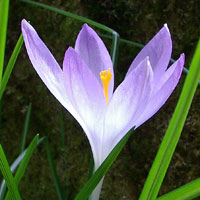
Some plants require a long or short period of night/ day before they’re 'triggered' to flower. Growers use their knowledge of particular plants, then adjust the length of dark and light they experience, to ensure the plants flower 'out of season'. Examples are cut flower chrysanthemums and poinsettias; both flower only after they've been through a spell of long nights. That's why it's difficult to get poinsettias to flower again for Christmas in the UK – they need a longer spell of short nights than we naturally experience.
Growers can also manipulate the temperatures plants are grown in, either to retard growth or 'bring plants on'. Spring bulbs can be kept in cold storage over the winter and early spring and then brought into growth much later than normal.
Alison Foster
Why do watermelons explode?
The Chinese are having problems with watermelons exploding (read article). Does this happen here in the UK, with other produce? Is it possible to defuse them if so?
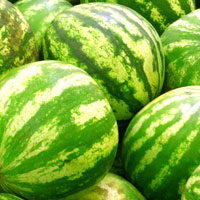
Cracking and splitting of fruit is not uncommon. The usual cause is a rapid flow of water to the developing fruit. This can be caused by an abundance of water after a dry period or a cool period following a hot one. The rapid uptake of water into the fruit creates a hydrostatic pressure which the 'skin' is unable to contain causing it to split.
Some members of the cucurbit family do 'explode' to disperse their seeds. Two examples are:
- The squirting cucumber, Ecballium elaterium, naturally develops a high hydrostatic pressure inside the ripening fruit. A passing animal (or human) knocking the fruit causes it to detach from the stalk. The sap and the seeds are then ejected at high speed and over a considerable distance.
- Members of the genus Cyclanthera 'explode' when ripe. The segments of the fruit spring back violently ejecting the seeds. One species has a bright red pulp around the seeds giving the aftermath of such an explosion a rather gory spectacle. This is again due to hydrostatic forces in the fruit wall.
A similar build-up of hydrostatic pressure seems more likely to be the cause of the exploding Chinese watermelons.
To see a video of Ecballium 'exploding' click here
How is fruit production faring?
What's happening to fruit production in the UK? The last two winters were really harsh.
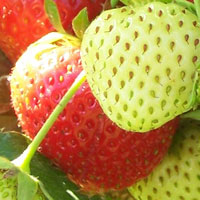
We in the UK rely on certain varieties of tree, bush and soft fruit to be adapted to the climate we used to 'enjoy'. These were selected to cope with - No, to require - a cold winter. So many units of cold (lower than 8°C) are needed to spur on the production of tree and soft fruit, rhubarb, strawberries etc.
Commercial production in the UK is fine at present. The mild conditions in March and April have meant that pollination of all our fruit plants has been secure…so, loads of fruit are expected. if you have fruit trees, remember to reduce the fruit on each cluster to just one - that way you get the best crop.
- Looking at top fruit: Back in the 1970s-1980s, Cox was the dominant apple variety. It was threatened by imported Golden Delicious -'Le Crunch' - which was too cold-sensitive to grow in the UK. Fast forward to the present; UK growers are planting Braeburn, Cameo and Jazz, none of which would have flourished here 30 years ago. Our plum staples - Victoria and Marjorie's Seedling - have been joined by European varieties like Jubileum (from Sweden). There's a whole series of plum x apricot hybrids - the plumcots, pluots and others- which may find a niche in the far south-east and gradually work their way north-westwards. The cherry acreage has increased dramatically in the past 10 years, thanks to dwarfing rootstocks and protected cropping.
- As for bush fruit: In the 1970s-1980s, blackcurrant breeding programmes focussed on generating varieties that flowered late, to avoid the flowers being frosted. The focus has changed, to incorporate resistance to big bud mite (Cecidiphyopsis ribis). Blackcurrant breeding is geared to the requirements of Ribena; in 2006, Rex Brennan of SCRI expressed concern that mild winters might annihilate the UK blackcurrant crop.
- And as for soft fruit: Strawberries are bred world-wide; the crop divides between June bearers and ever-bearers. David Simpson at East Malling has bred some very successful June bearer varieties; Doug Shaw, at the University of California (Irvine) has generated a series of ever-bearers that are licensed for world-wide production. Breeding for resistance to strawberry P&D - see websites. Nowadays, strawberries are grown in sophisticated systems (table-top etc); this means that soil-borne infections are bypassed. Many growers grow them under cover, eliminating weather damage.
Raspberries are bred world-wide; the crop divides between June bearers and autumn bearers. SCRI has produced a series of 'Glen' varieties, including 'Moy', 'Prosen', 'Ample' and many others. The most successful autumn fruiting variety is 'Autumn Bliss', bred at East Malling by Elizabeth Keep and Vicky Knight.
Margaret Waddy
How safe is it to use recycled green waste?
How safe is it to use recycled green waste as a soil conditioner? I’m worried that I might import weeds like ground elder and bindweed into my garden.
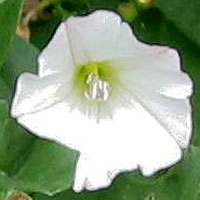
Margaret Waddy
Why do stinging nettles sting?
Why do stinging nettles sting, and do dock leaves really help?
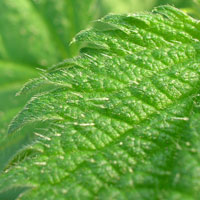
- Acetylcholine: a chemical neurotransmitter responsible for transmitting nerve impulses
- Histamine: another neurotransmitter responsible for the inflammatory response in the skin.
- Serotonin: another neurotransmitter involved in 'mood' responses. Sometimes called the 'happiness hormone,' although personally I have never felt the benefit of this when stung by nettles.
- Formic acid: what it says on the label, an acid and the main chemical responsible for the sting - the others just make sure you know all about it. This is the same chemical as ant sting and the acid gets its name from the Latin word for ant, formica.
As for dock leaves, there is no chemical explanation for their effect. In fact they contain another acid, oxalic acid, although this does not sting in the way that formic acid does. It is quite natural to rub a sting and some suggest that it is the rubbing action the actually helps, with or without dock leaves. The broad-leaved dock, Rumex obtusifolius, grows in similar places to nettles and with their large soft leaves may have been the natural thing to grab hold of to do the rubbing.
A bucket of spuds
What is the best way to grow potatoes in a bucket?
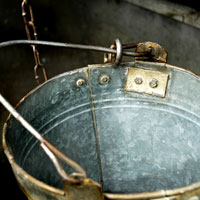
Take one 'seed' potato for an average sized bucket, preferably 'chitted' i.e. placed in a cool light place for small shoots to develop.
Remove some of the small shoots 'eyes' from the potato, leaving just one or two. Half fill the bucket with soil or multipurpose compost and plant the potato just below the surface. When the shoots (haulm) appear above the soil, add more soil or compost around the haulm at regular intervals, 5cm at a time, until the bucket is almost full. The tubers or 'new' potatoes are produced at the tip of underground stems or stolons which grow out from leaf nodes at around soil level. This heaping-up of soil around the plant buries more leaf nodes and encourages more stolons to grow and hopefully more new potatoes. These new potatoes also need to develop in the dark to prevent them going green.
Potatoes contain toxins called glycoalkaloids, particularly solanine and chaconine. Solanine poisoning, while rarely fatal, is not pleasant while chaconine gives the potato a bitter taste. These are present in harmful quantities in all the green parts of the potato plant including the fruit berries which are sometimes formed and green tubers. Tubers that have turned green through exposure to light or which taste bitter after green sections have been removed, should not be eaten.
Grown in a bucket in this way you harvest the potatoes by emptying the bucket. However, it has been claimed that if you remove the bottom from your bucket before you start you can get more continuous production. Ideally for this system the bucket should have nearly vertical sides or you can use a plastic or metal tube of similar diameter. Grow your potatoes as above but when you are ready to harvest simply lift the tube a few inches allowing soil and hopefully some potatoes to fall out of the bottom. Fill the space you have now made at the top of the tube with more compost, covering more leaf nodes and encouraging more stolons to be formed. I have never tried this system or seen it done so cannot vouch its success.
If you keep a 'new' potato and plant it in your bucket in early September, grow it as above in a garden greenhouse or conservatory, frost-free – you may be lucky and have new potatoes on Christmas Day.
How do you get rid of greenfly without pesticides?
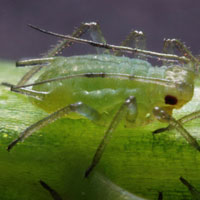
Non-chemical methods of control rely on biological agents to kill the greenfly. Three types of agents can be used:
Predators
Greenfly provide a plentiful supply of food for certain birds and insects. While ladybird larvae are well-known to feed on greenfly, so do many others. Wasps, unpopular as they become in late summer, spend the spring and early summer eating other insects including large numbers of greenfly. Hoverfly larvae are particularly effective greenfly killers - these beneficial insects are either overlooked or killed in error as wasps or houseflies for which they can easily be mistaken. Ground beetles and small 'money' spiders also help to keep greenfly numbers down.
Parasitic insects
There are a number of species of tiny 'wasps' that do not sting humans but inject their eggs into greenfly. The larvae or caterpillar stage then eats the greenfly inside its skin, eventually emerging as another adult wasp to lay its eggs on more greenfly.
Parasitic fungi
The fungus Verticillium lecanii can invade greenfly and kill them. The dead greenfly become furry with fungal spores which can then invade other greenfly. However, this fungus needs rather specialised conditions to work effectively.
All these agents can be purchased and are used commercially to control greenfly in greenhouse crops. However most are native to the British Isles and it is simply a question of encouraging them. Ladybirds for example need small dry spaces to hibernate in over winter. The gaps in window frames are popular but risky but hibernating houses can be purchased or made. Adult hoverflies feed on pollen, it is their larvae that eat the greenfly, so provide plenty of pollen producing flowers.
George Baker
Pale plants
I am a newbie at 'growing my own', currently experimenting with salad greens. As it turns out, the leaves are not quite so green, but a bit pale and translucent. What could be the reason for this?
Without knowing how or where you are growing your salads it is difficult to be precise over the cause. The paleness is due to a shortage of the green pigment, chlorophyll. This is the pigment that traps the energy from sunlight that the plant uses to power its growth. The main causes of this shortage and therefore the things to watch out for are:
Waterlogged soil
Plant roots need oxygen to release the energy they need for mineral ion uptake. Waterlogged soils lack oxygen so roots are unable to absorb nitrate, magnesium etc to make chlorophyll. Overwatering and lack of good drainage are very common causes of a number of plant problems.
Lack of light
In full light plants produce chlorophyll inside chloroplasts within the leaf cells and these chloroplasts become concentrated near the leaf surface giving leaves a dark green colour. In low light, less chlorophyll is produced and the leaves grow larger and thinner in order to absorb as much of the available light as possible for photosynthesis (a survival mechanism). In these large thin leaves, the chloroplasts are spread more thinly so the leaves develop a paler more translucent appearance.
Overcrowding
If the plants, especially seedlings, are grown too close together they cannot get enough light producing the same symptoms as above.
Lack of nutrients
As well as energy from the sun, plants need mineral ions to produce chlorophyll. If these are not already present in the soil, compost or growing media or have been used up by the plants they must be added as a balanced fertilizer. This can be either liquid or solid, organic or inorganic - all should contain the same minerals, though not necessarily in the same proportions.
Mary Slater
Can you grow plants in anything other than soil?
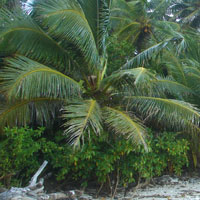
The growing medium needs to:
- Provide anchorage for the plant
- Provide adequate air spaces for root respiration
- Hold sufficient available water
- Hold sufficient available nutrients
- Be free of plant pathogens, pests and weeds
- Be safe when handled by people
The most commonly used alternative to soil is peat, although concern about its use has led to alternatives being explored. One is 'coir', the peat-like particles left when coconut fibre has been removed from the 'copra' that surround the coconut. Recently, composted domestic green-waste has become more popular. Other growing media that are used include sand and gravel and a number of 'manufactured' substrates, usually created by heating clay or volcanic rock, such as Perlite, Vermiculite and Lytag.
The most popular medium used by commercial growers is rockwool. These 'wool' fibres are formed by 'spinning' molten rock in a similar way to the manufacture of candy floss. Rockwool is familiar as insulation in refrigerators, pipe lagging and wall cavities. These industrial rockwools use bonding agents that can be toxic to plants. Horticultural rockwool uses non-toxic bonding agents to hold the fibres together. Most of the tomatoes, cucumbers and peppers grown in the UK are grown in this medium.
If the plant is to be supported by something other than the growing medium, by tying to a stake or string, a solid growing medium is not required. Many plants will grow quite happily in a thin film of flowing water, a system known as the Nutrient Film Technique (NFT).
Whichever growing medium is used it is important to remember that none of them have any fertilizer value and this must be added, either mixed in as a solid or diluted in the water fed to the plants.
John Russell
What should I plant to attract butterflies?
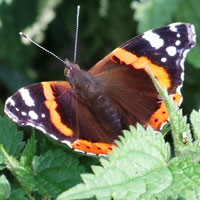
Caterpillar food
Unfortunately the caterpillars often feed on the leaves of plants we are growing (e.g. the caterpillar of the cabbage white butterfly feeds on cabbages, cauliflower etc) or plants we do not want in our garden (eg the caterpillar of the tortoiseshell butterfly feeds on stinging nettles). A number feed on grass but it is the tall untidy grass of meadows they like not neatly trimmed lawns.
Butterfly food
Fortunately butterflies can usually find food plants for their caterpillars outside our gardens and it becomes a matter of attracting them in with nectar producing flowers. One of the finest is Buddleja or buddleia, often know as the butterfly flower. However, ideally one needs to create a succession with a selection of flowers opening through the spring and summer and into the autumn.
- Butterfly Conservation provides a useful list
George Bentley
To net, or not to net?
I am thinking of using netting to protect my crops from pests, as there are fewer chemicals available to control them. What are the pros and cons of using netting?
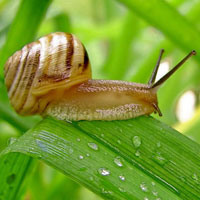
Larger mesh sizes protect crops from birds, rabbits and deer and have minimal impact on the environment underneath. They allow for irrigation, applications of fertiliser, sprays and slug pellets through the netting, but smaller pests can get through and these might be vectors (carriers) of disease.
Smaller mesh size eg 1.35mm x1.35mm protects crops from the larger pests already mentioned, together with caterpillars (from eggs laid by butterflies). This mesh size allows reasonable light penetration and airflow. The netting creates a humid environment, slight shading, shelter from wind and hail, plus reduced temperature fluctuations.
Smaller pests require even smaller mesh size – flea beetle, onion fly, leak moth and allium leaf miner 0.85 x 0.95mm, aphids 0.22 x 0.8mm and thrips 0.22 x 0.35mm. These finer mesh nettings allow less airflow and can make spraying and irrigating the crop more difficult. They can create a higher humidity and heat accumulation, making it difficult for plants to cool down by transpiration. Plants might be more prone to certain diseases in this environment.
The main disadvantages to netting are the initial costs and the labour involved in handling it. However, netting can last 10 years or more; second-hand netting is available and there is now roll-out machinery to make handling easier.
Nets may need lifting for weeding, applying slug pellets etc. Netting gets dirty; and this reduces light transmission and there is a potential risk of disease transmission when the nets are used on other crops. Netting is becoming increasingly popular particularly for protection from pigeons. Trials are underway to investigate the effect of different coloured netting on yields.
It is important to have some knowledge of the life-cycle and behaviour of the pests, to know when the crop needs to be covered and when it is safe to remove the netting.
For further advice, contact one of the netting suppliers – Wondermesh, Agralan (Enviromesh) and Capatex.
What is IPM (Integrated Pest Management)?
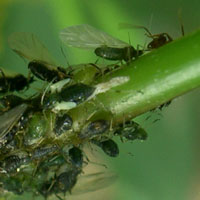
It can be summed up as, an approach to pest and disease control which maximises efficiency but minimises risks.
Such a system is based on good husbandry, natural enemies and materials (biological) and minimal, or often no chemicals.
Biological control in today’s world should be first consideration, and where possible first choice, followed very closely by IPM.
IPM can be used with equal success in both commercial and domestic cropping.
Tony Girard
Ivy inquiry
Is poison ivy really poisonous? What makes it different from ordinary ivy?
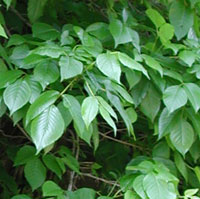
Poison ivy belongs in the plant family Anacardiaceae; this family also includes the familiar sumac bush (Rhus typhina) as well as mangoes and cashew nuts, which goes to show that there are heroes and villains in any family (though rare allergic reactions to the two 'heroes' have been reported).
Ivy (Hedera helix) is entirely unrelated, except by name. It belongs in the family Araliaceae. Common names are often shared by plants with particular characteristics; in this case, shiny dark green leaves and tree climbing habit. Similarly, we call many plants 'rose' (rock rose, sun rose, Christmas rose), though none of these is a member of the genus Rosa.
In 2004 the Horticultural Trades Association, in association with the National Poisons Unit at Guy's and St Thomas Hospital Trust and Royal Botanic Gardens, Kew produced a code of recommended retail practice. Poison ivy and its close relatives are in Category A, as posing great and serious risk. I doubt they'll be on offer at a nursery or garden centre anywhere near you. Just beware if you go walking in the woods of North America.
Margaret Waddy
Wonder crops
I've heard potatoes described as a wonder crop, presumably because you can get a good crop very quickly. Are there any other wonder crops that you can grow in the UK?
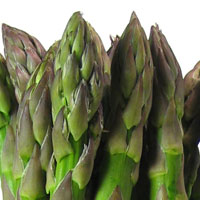
The present cry from many of the UK's most media-savvy chefs is 'seasonality'. That's excellent if their articles or programmes appear in summer. In midwinter, seasonality means root vegetables, brassicas, tree fruit you've stored carefully in a cool cellar or loft, and any leaf crop you can persuade to grow in your greenhouse or on your windowsill in shortening days.
If your criterion is speed, yes, potatoes offer an early return on the investment in some 'seed' tubers. You choose the cultivar - early, salad, maincrop. Plant them, water them and harvest them, all in the space of three or four months. Jerusalem artichokes are another wonder crop - related to sunflowers, they also grow from tubers. Once you have them…you have them.
Looking at rarity value, my choice would be asparagus. Not speedy; you can buy crowns by mail order, and in three years you'll be cutting your own spears, instead of buying dehydrated versions on the market. Even in an asparagus area, the stems dry out rapidly.
What about your site? Are we talking about a garden/ allotment with deep fertile soil, or a windy balcony/ roof garden? You're spoilt for choice if you have unlimited space; you can build raised beds and import soil, and adjust the pH to suit your most fastidious little darlings. If all you've got is a tiny terrace, look for plants that can cope in pots or troughs. We may just be looking at a single tomato plant here, or a few herbs; but let's make those the juiciest tomatoes and the most recherché herbs. Having fresh mint and dill to add to December dishes will stun your guests as you serve up new minted potatoes (save a few seed tubers, plant up in autumn somewhere frost-free and they'll be ready for the cold turkey Boxing Day feast); and the dill will top off your blinis (or the carp on Christmas Eve). There are ways of 'persuading' soft fruit to extend their season, but the methods are probably beyond most gardeners.
Going back to your question, what do you consider to be a wonder crop? What would you most like to grow, to produce a crop? Please let us know.
Margaret Waddy
How can I revive my orchid?
What can I do to revive my orchid plants now that they've stopped flowering?

Burnham Nurseries of Newton Abbot, Devon provides a very good page of tips for growing Phalaenopsis (read more), as well as the other common genera Cymbidium and Odontoglossum (read more). Ivens Orchids of St Albans has another page of frequently asked questions about orchids.
Beware: There are many similar FAQ pages from American orchid nurseries. Their advice is good but not always relevant if you are based in the UK.
If you prefer a reference book, The Orchid Expert by Dr D G Hessayon (ISBN 0903505673) is invaluable.
John Gibson
